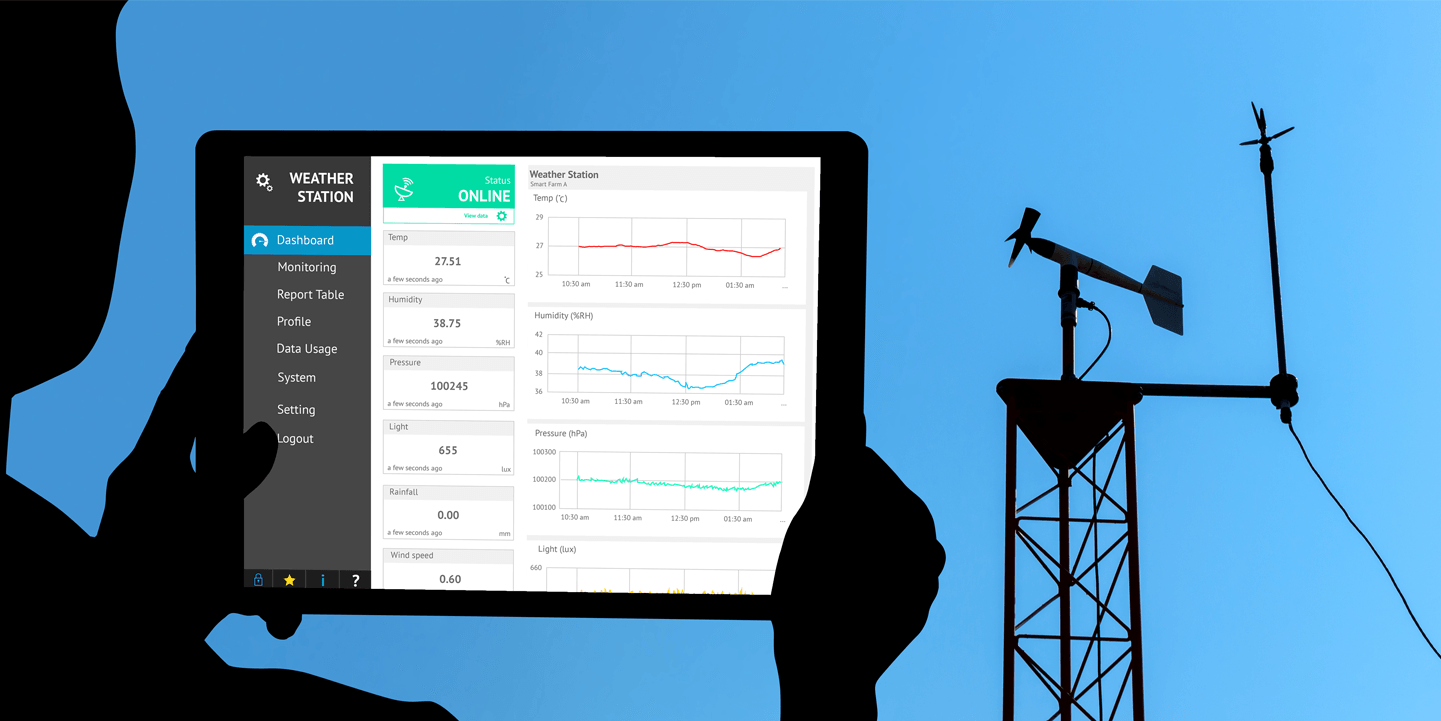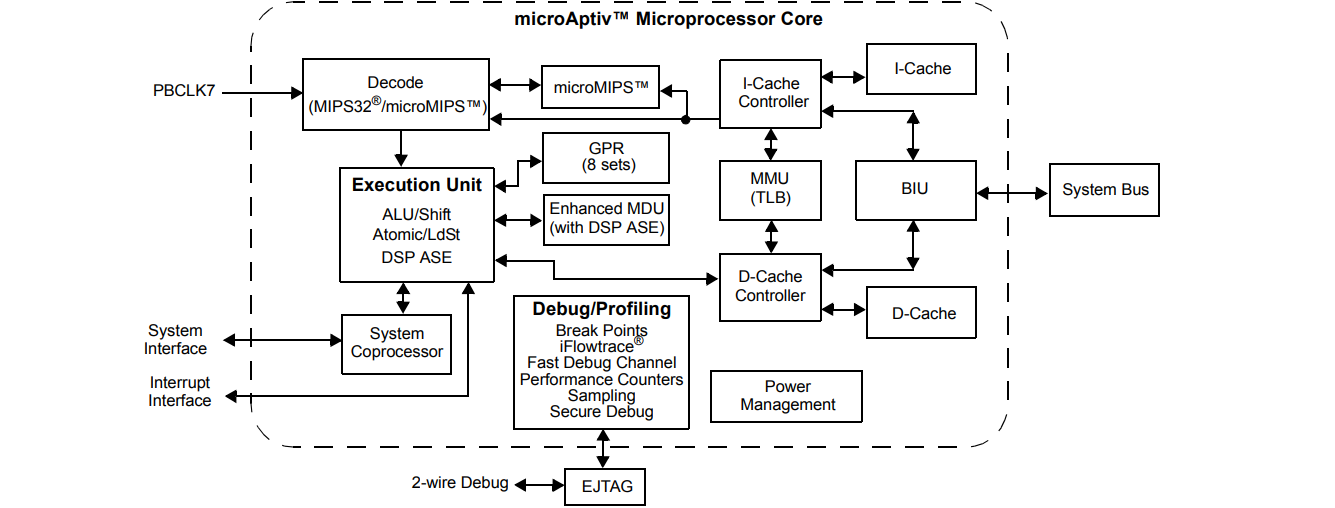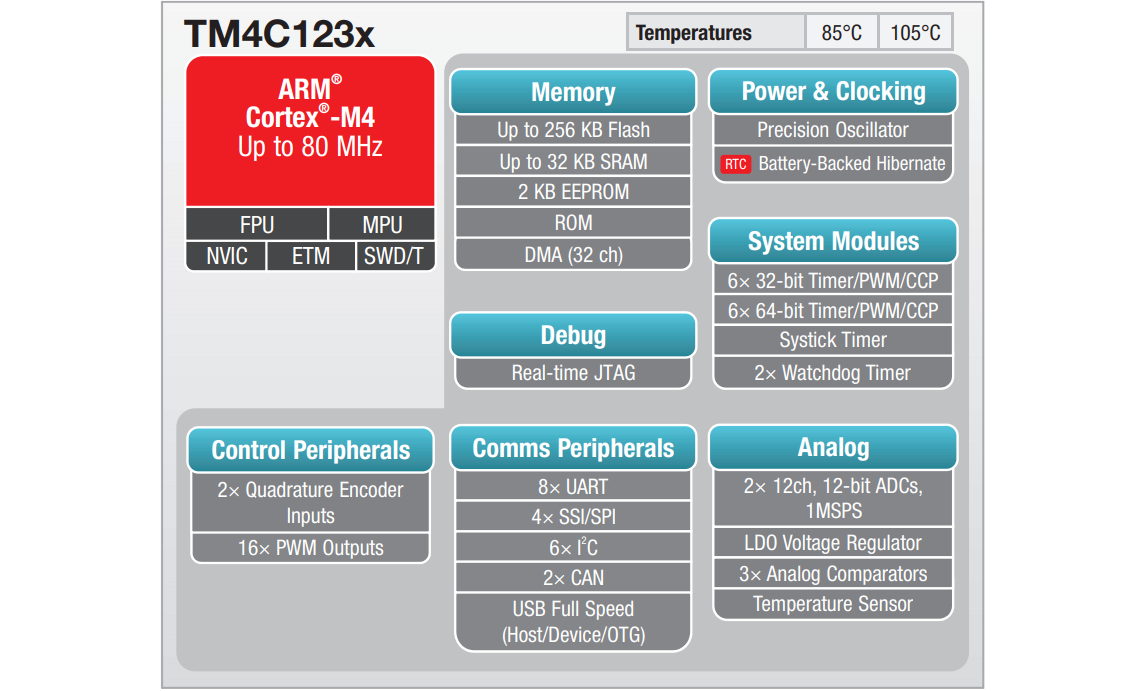
I was recently asked by an industrial client to help design a new version of a board for interfacing with a large number of sensors. The goal here was to consolidate three boards with separate functions and components into a single board that provided all interfaces needed for data acquisition. It got me thinking about the type of MCU one might need to use for a sensor hub, and just how many channels you can fit into a single MCU.
As it turns out, if you buy a high performance MCU, they can have a pretty good number of ADCs with reasonably high resolution you would need for sensor data acquisition. If you’re not building a control board for, say, coherent optical measurements at very low signal level and SNR value, major manufacturers will give you plenty of options for MCU boards with high I/O count and high ADC channel count. Here are some options you can use in your next sensor hub board or similar product.
High ADC Channel Count in Your Sensor MCU
Interfacing between the analog world and the digital world takes sensors, and those sensors need some way to interface with a processor in your board. Enter a multi-channel ADC, which gives you multiple channels to collect and process data. If you need to build a system with small footprint, you can use an MCU with integrated ADC. While not the most powerful in terms of computing power, many MCUs include plenty of peripherals needed to interface with other digital components and analog sensors.
MCUs with high ADC channel count give you particular advantages in a number of mixed-signal systems. Instead of using an external multichannel ADC, here are some reasons you might want to use an MCU with high channel count:
Moderate clock rate: MCUs with high channel count ACDs also tend to have high clock rate to provide the required sample rate, so they can also quickly process converted data with moderately complex algorithms.
Sampling rate: Most 16-bit or 32-bit MCUs with high ADC channel count still provide ~Msps sampling rate. This provides accurate sensing of analog signals up to ~MHz frequencies.
Peripherals and interfaces: If your sensor doesn’t need to connect directly to your ADC, MCUs offer standard low-speed interfaces for collecting data from other peripherals.
Aside from low-speed and high-speed interfaces, ADC channel count, and clock/sampling rates, two important specifications for sensor node design include onboard memory and power consumption. For power consumption, you’ll want a component with sleep mode and conditional wake-up control as this will help conserve power.
Finally, MCUs with high ADC channel count sometimes have these spread channels across multiple ADCs running in parallel, rather than a single ADC with all available channels. Using multiple ADCs enables interleaving to be implemented, where the sample rate is increased by applying a phase shift on the output from each ADC. In other words, if the component contains N ADCs, then interleaving allows the sample rate to be increased by a factor N.
Some High ADC Channel Count MCUs
Microchip, PIC32MZ Series
The PIC32MZ Series of MCUs from Microchip are part of the company’s Embedded Connectivity (EC) Family. These components provide up to 48 analog channels with 10-bit resolution, 1 MSPS, and independent external ADC trigger sources. The 32-bit ARM Cortex M4 core operates at up to 200 MHz. Different footprints contain a range different I/O counts for interfacing with peripherals, as well as standard interfaces (I2C/SPI/I2S) and EBI or PMP graphics interfaces. High speed interfaces include a USB 2.0 controller and 10/100 Ethernet MAC with MII and RMII interface.

PIC32MZ Series core block diagram. From the PIC32MZ series MCU datasheet.
STMicroelectronics, STM32F405xx and STM32F407xx
The STM32 Series of 32-bit MCUs from STMicroelectronics is arguably the most popular MCU on the market next to Atmel MCUs (of Arduino fame). STM32F405xx and STM32F407xx MCUs include 3 embedded ADCs, each with 16 channels and 12 bit resolution. Sampling is provided at up to 2.4 Msps and 30 MHz Flash access with VDD = 3.0 to 3.6 V (60 MHz full-power clock rate). In addition, the ADCs in these components can operate at 7.2 Msps with 24 channels in interleaved mode. These two components contain a number of standard interfaces (SPI/I2C/UART), up to 140 I/Os, USB 2.0 PHY, and 10/100 Ethernet MAC.
Texas Instruments, TM4C123x Series
The TM4C123x Series of MCUs from Texas Instruments include up to 24 ADC channels with 12-bit resolution at up to 2 Msps sample rate. This component runs on an ARM Cortex M4F core (120 MHz clock rate) with up to 1 MB Flash and 256 KB internal RAM. For access to peripherals and other sensors, other interfaces include UART, I2C, SPI, and CAN, as well as 40 PWM outputs. Included is a USB 2.0 PHY and 10/100 Ethernet MAC. The high sample rate, resolution, and ADC channel count in this series of MCUs makes them an excellent choice for sensor nodes in vehicles, industrial settings, robotics, and human-machine interface. A complete list of features is shown in the TM4C123x series block diagram below.

TM4C123x block diagram. From the TM4C123x MCU datasheet errata.
Other Components for Sensor Hub Design
In addition to actual sensors, there are other components you’ll need in your design to provide stable sensing from multiple sensors. Wireless connectivity and networking/computing interfaces are also quite important as sensor hubs need to be integrated into a larger ecosystem. In addition, there are some signal acquisition and conditioning components you can use to ensure accurate acquisition.
MCU-driven sensor nodes take a broad range of components, and you can use the advanced search and filtration features in Octopart to find the parts you need. When you use Octopart’s electronics search engine, you’ll have access to distributor data and parts specifications, and it’s all freely accessible in a user-friendly interface. Take a look at our linear integrated circuits page to find the components you need.
Stay up-to-date with our latest articles by signing up for our newsletter.